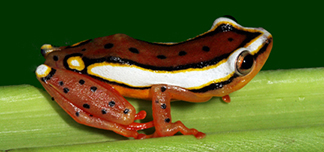| Publication Type: | Journal Article |
| Year of Publication: | 2003 |
| Authors: | R. T. Gregory |
| Journal: | Biological Journal of the Linnean Society |
| Volume: | 79 |
| Pagination: | 329-339 |
| Date Published: | June |
| Abstract: | Amphibians have featured prominently in discussions of the C-value enigma, the still-unresolved puzzle regarding the evolution of genome size. Their wide range in nuclear DNA contents and diverse ecological and developmental lifestyles make them excellent subjects for addressing the key elements of the C-value enigma. However, in some cases the importance of work on amphibians appears to be overstated. This is especially true of claims that patterns of variation in salamanders support a particular theory of genome size evolution to the exclusion of others. This study provides a critical re-examination of some of these claims, as well as an investigation of the relationships between genome size, cell and nuclear size, and metabolism in amphibians. The results of these analyses, combined with an overview of previous amphibian genome size literature, strongly indicate the need for a pluralistic approach to the C-value enigma. In particular, it must be recognized that evolutionary forces operating and interacting at several levels of biological organization (of which the genome itself is one) are responsible for the observed patterns in amphibian genome size distributions. |
